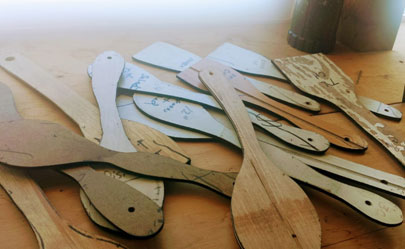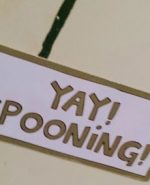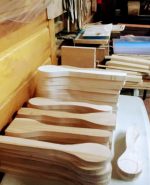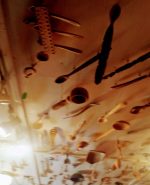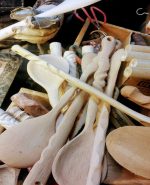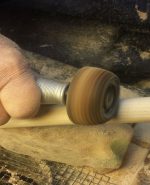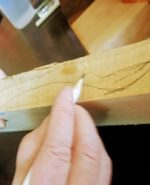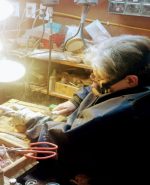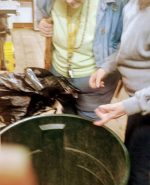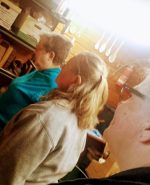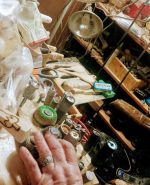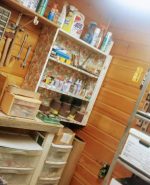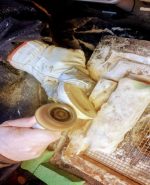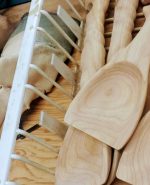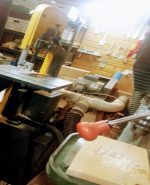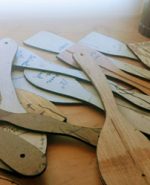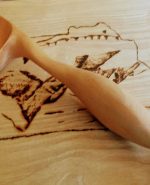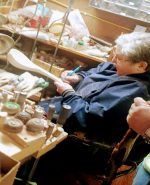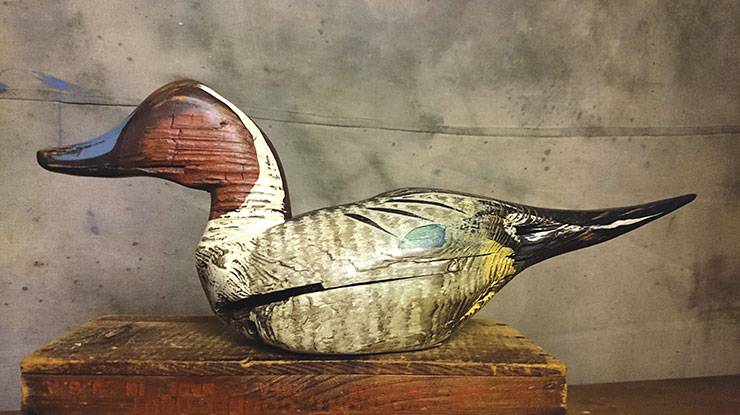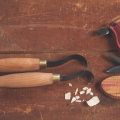Visiting a wonderful world of wooden spoons
By Alma Winberry
A few years ago, I attended the West Glacier Carving Rendezvous in Montana. One afternoon, my friend Faye Spiller and I decided to take an afternoon drive. As we were taking in the sights, Faye asked me, “Have you ever been to the Spiral Spoon?” I looked to my left and there it was; I whipped my car into the parking lot and entered into the wonderful world of wooden spoons.
From the front of the store I could see a lone employee, Zach Deverman. All around him hung wooden spoons from the ceiling, walls, and displays. I was astonished that one tool could sustain a business, much less be of such interest to anyone. Faye and I invited Zach to the Rendezvous, and he introduced us to the Spiral Spoon’s owner, Jo Wagner. We asked Jo if we could come back and visit, along with a few of our woodcarving friends, to learn more about her spoon carving. About a month later, we went back with a carload of curious carvers.
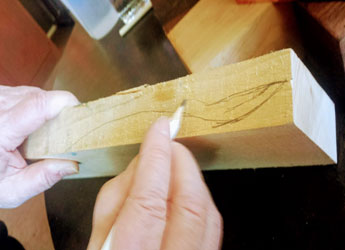 Jo was more than happy to share her techniques. She also provided each of us with a block of basswood to use as practice. After we learned how to draw a spoon from both the front and side views, we each took a turn at the band saw and Foredom rotary tools to create the rough shape of a spoon. We were amazed at the large drilling attachments and elaborate venting system set up for mass production. At the end of the day, we each went home with a spoon we had carved with loving care.
Jo was more than happy to share her techniques. She also provided each of us with a block of basswood to use as practice. After we learned how to draw a spoon from both the front and side views, we each took a turn at the band saw and Foredom rotary tools to create the rough shape of a spoon. We were amazed at the large drilling attachments and elaborate venting system set up for mass production. At the end of the day, we each went home with a spoon we had carved with loving care.
A few months later, I returned to Jo’s workshop with another group of carvers to learn more about the spoon carving business. I learned about the push from the public for handmade items during the summer tourist season every year, as well as the many ways a business can organize itself to get the job done. Sometimes it can take many years to develop the simplest techniques to ease production; the rigors of finding ways of working with ease are not always easy.
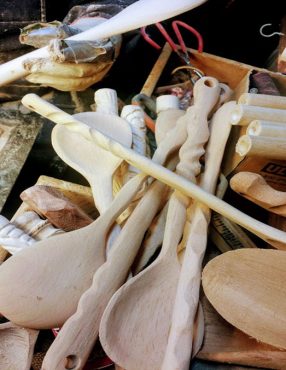 Jo taught us many things, from how to spot and treat wood that contains worms, to what kind of food-grade solutions are most economical, to what kind of sandpaper (the kind without metal fillings) is best for sanding spoons. Jo even shared her contacts for supplies, wood, and equipment. The most important piece of advice that Jo gave us was, “Stories sell your product; everything you sell should have a story.” People want to feel connected with the earth and can experience this connectivity though carved wooden items.
Jo taught us many things, from how to spot and treat wood that contains worms, to what kind of food-grade solutions are most economical, to what kind of sandpaper (the kind without metal fillings) is best for sanding spoons. Jo even shared her contacts for supplies, wood, and equipment. The most important piece of advice that Jo gave us was, “Stories sell your product; everything you sell should have a story.” People want to feel connected with the earth and can experience this connectivity though carved wooden items.
It was not just expertise that Jo shared with my fellow carvers and me during my visits to the Spiral Spoon, but her passion for woodcarving. If you ever have a chance to visit the Spiral Spoon, stop by and introduce yourself. You will be glad you did.
Scroll down for some photos from inside The Spiral Spoon.
For more on The Spiral Spoon, visit them at www.thespiralspoon.com/.



